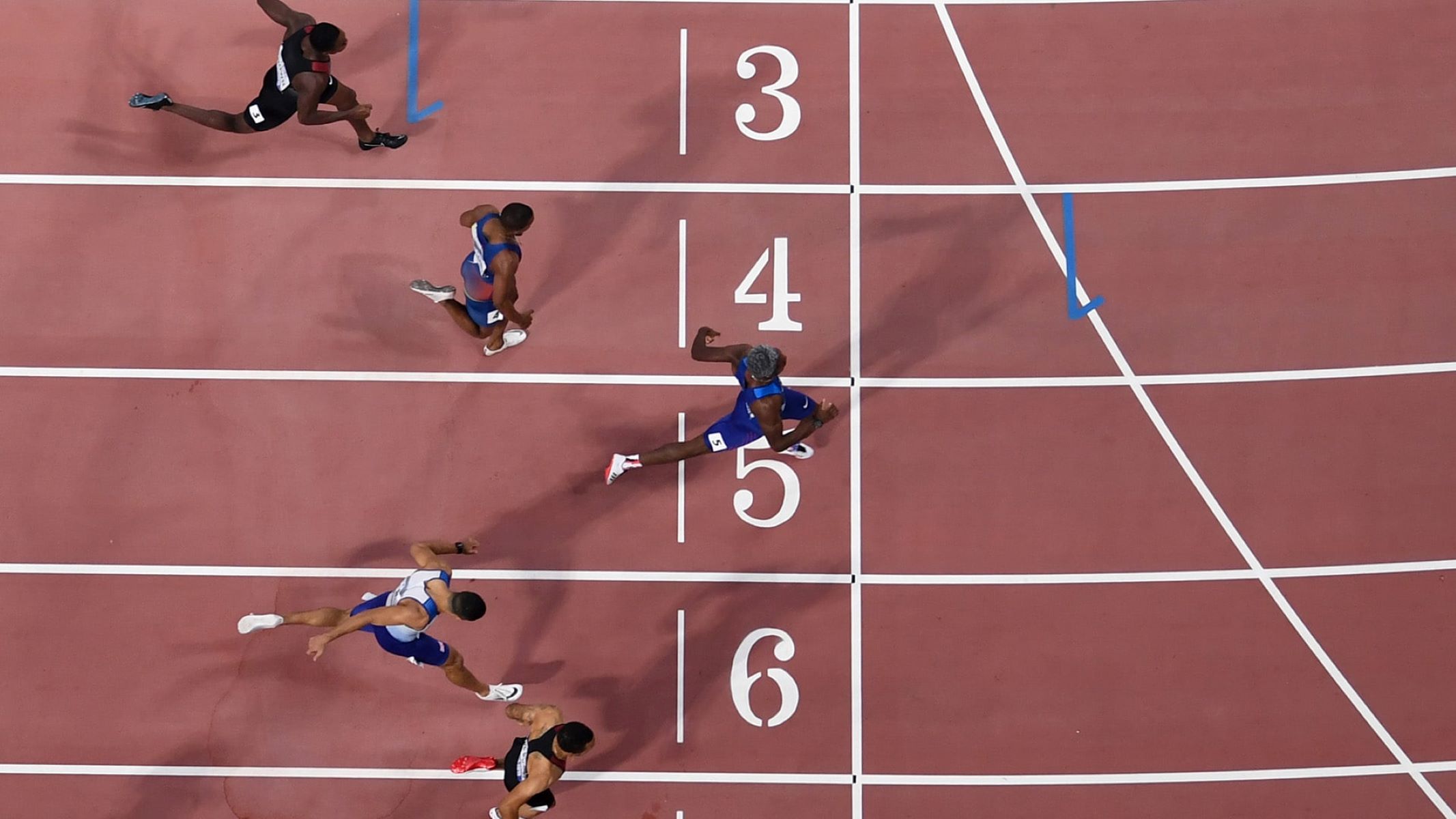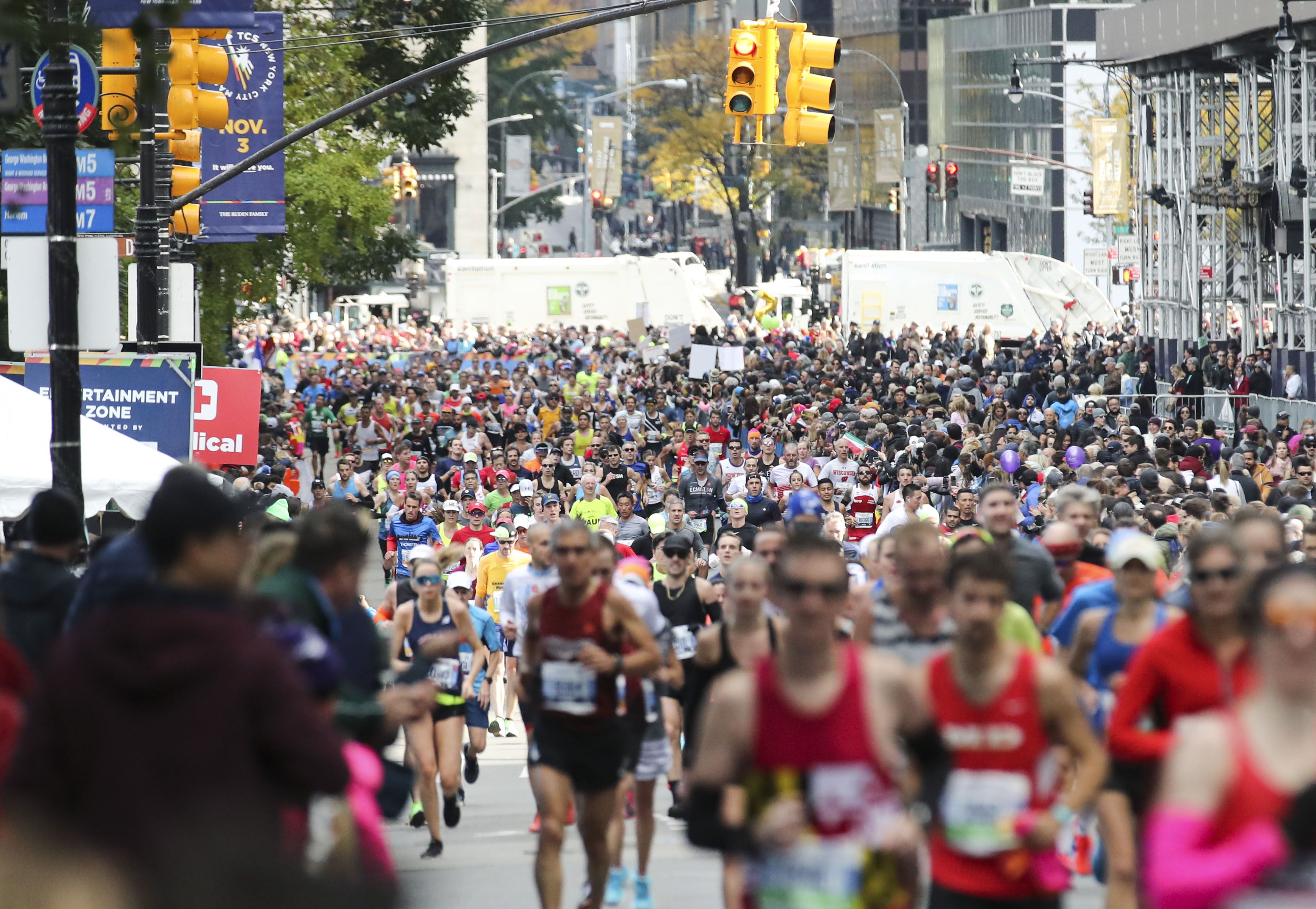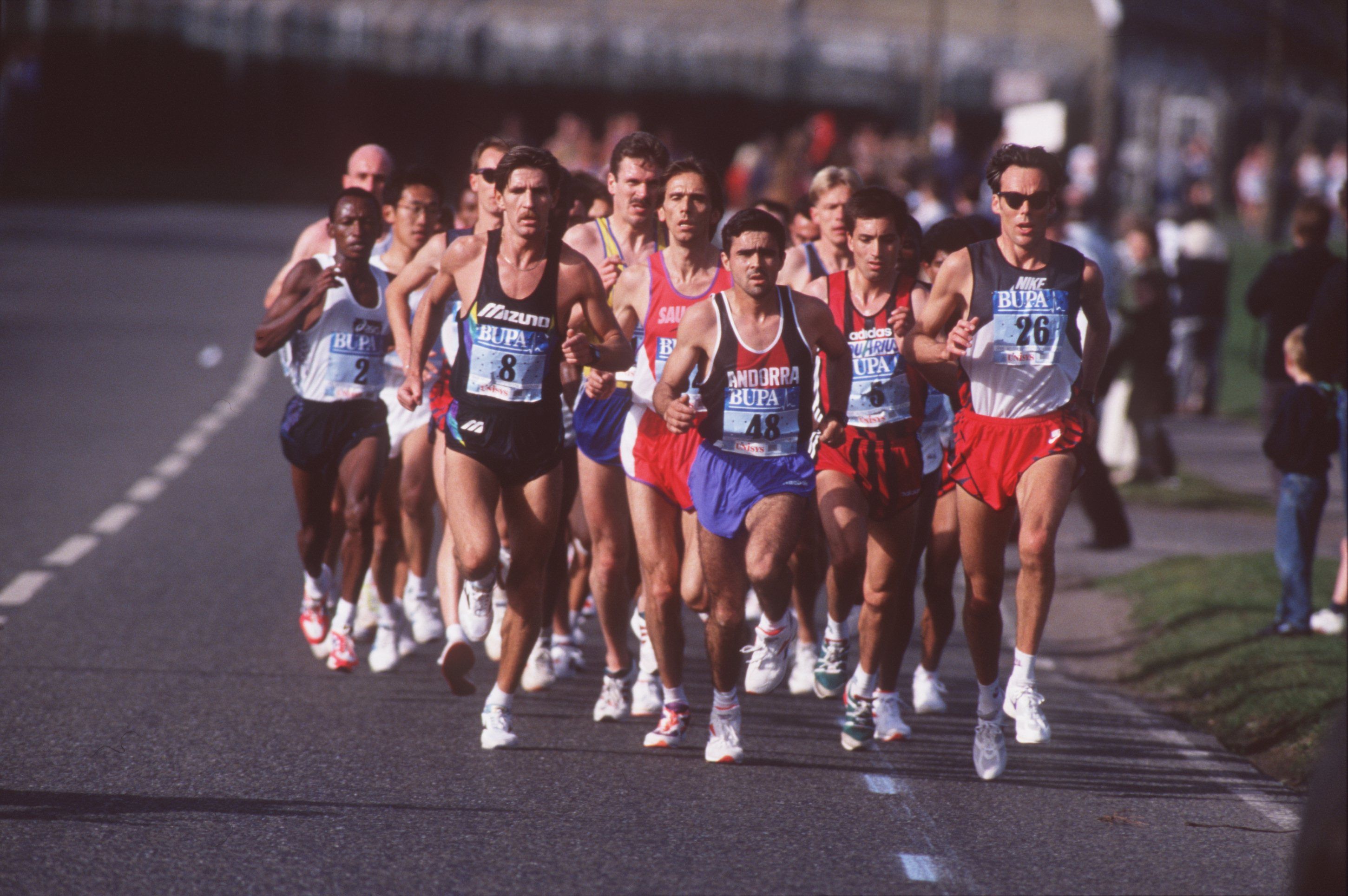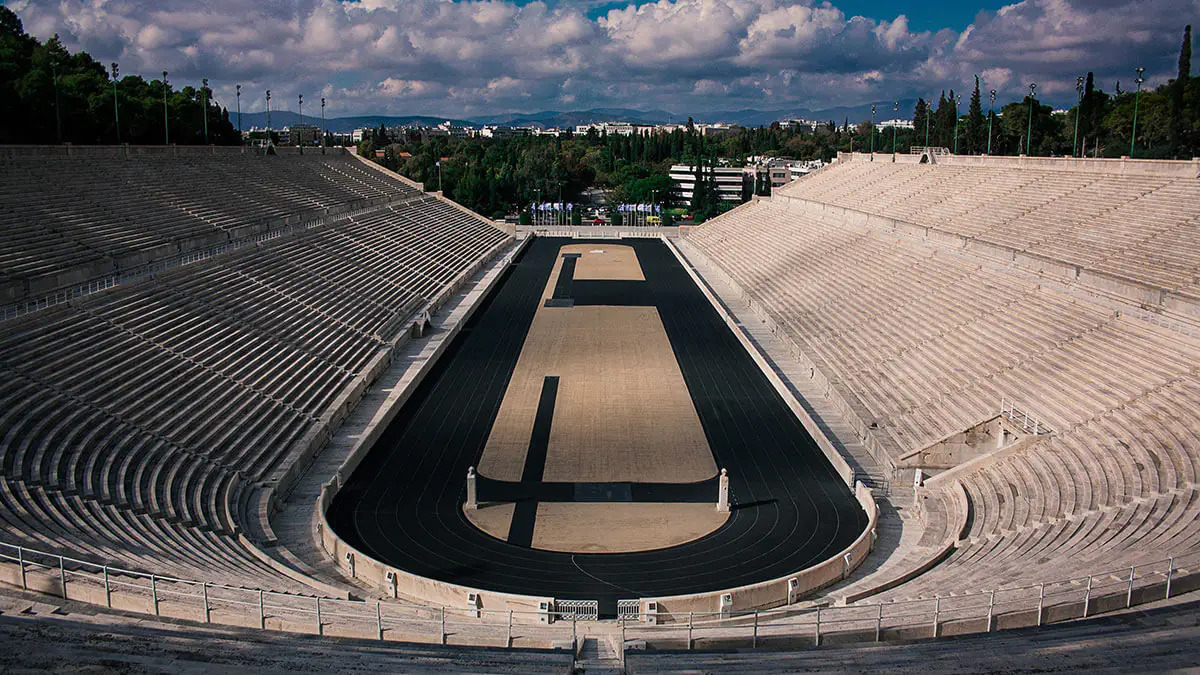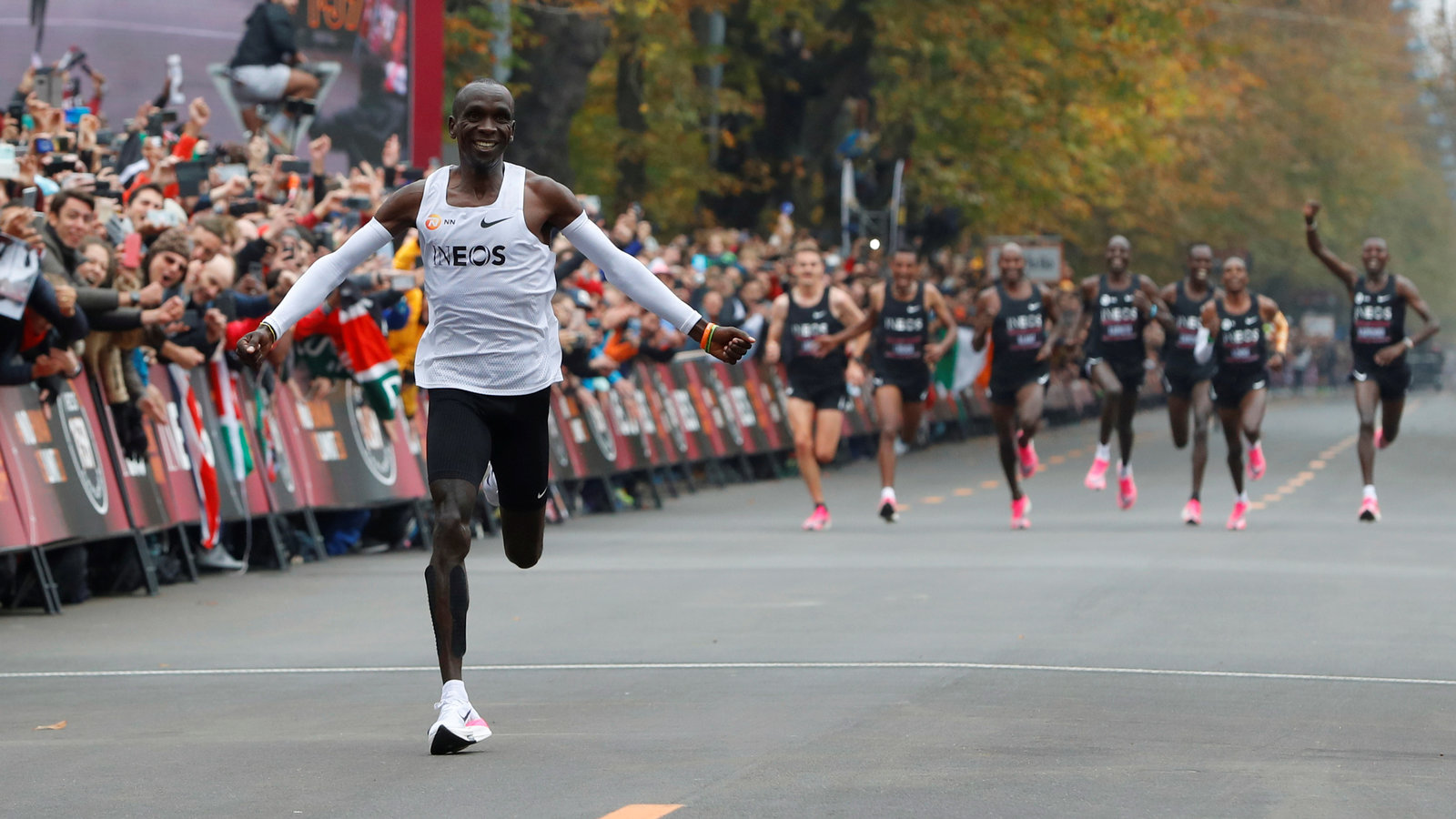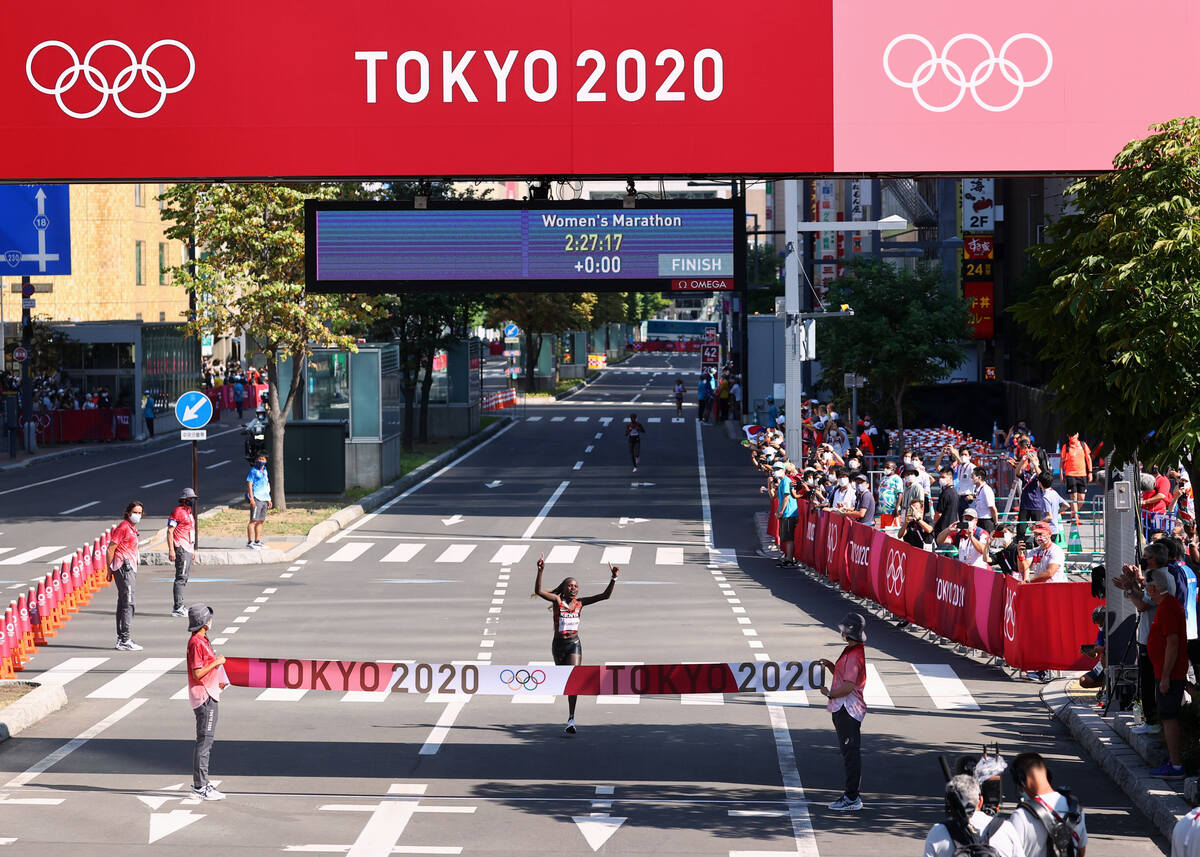

Featured
How Long Is The Olympic Marathon
Modified: August 19, 2023
Discover the length of the Olympic marathon and how it became a featured event. Uncover the history and significance of this iconic race.
Introduction
Welcome to the exciting world of the Olympic Marathon! The marathon is one of the most iconic and prestigious events in the Olympic Games, capturing the hearts of athletes and spectators alike. This grueling long-distance race has captivated audiences for centuries, pushing the limits of human endurance and showcasing the triumphs of dedication and determination.
The Olympic Marathon holds a special place in the hearts of sports enthusiasts worldwide. It symbolizes the spirit of the ancient Greeks and their historic Battle of Marathon. Legend has it that in 490 BCE, the Athenians sent a messenger named Pheidippides to announce their victory over the Persians. He embarked on a remarkable run from the battlefield of Marathon to Athens, covering a distance of approximately 26 miles.
This incredible feat of endurance served as the inspiration for the modern marathon. In 1896, the marathon made its debut at the first modern Olympic Games held in Athens, Greece. Since then, it has been an integral part of every Summer Olympics, attracting top athletes from around the globe.
Over the years, the Olympic Marathon has seen significant transformations in terms of distance, course, and rules. What began as an event with no set distance has evolved into a standardized competition, governed by strict regulations to ensure fairness and consistency. However, the journey to determining the official marathon distance has been marked by controversy and fluctuations.
In this article, we will delve into the history of the Olympic Marathon, explore the controversies surrounding its distance, and examine the factors that have shaped its evolution. Additionally, we will shed light on the current marathon distance used in the modern Olympic Games and discuss the various factors that can affect its length.
Join us on this fascinating journey to uncover the hidden secrets and remarkable stories behind the Olympic Marathon. Strap on your running shoes and get ready to explore the incredible world of this timeless event!
History of the Olympic Marathon
The history of the Olympic Marathon can be traced back to ancient Greece, where it all began with the legend of the Battle of Marathon. In 490 BCE, the Athenians achieved a decisive victory over the Persians in this historic battle. To relay the good news to Athens, a messenger named Pheidippides was said to have run from the battlefield of Marathon to the city, covering a distance of approximately 26 miles.
This legendary run by Pheidippides laid the foundation for the modern marathon. Inspired by this feat of endurance, the marathon was introduced as an event in the first modern Olympic Games held in Athens in 1896. The race began in the town of Marathon and finished in the Olympic Stadium in Athens, covering a distance of around 24.85 miles (40 kilometers).
However, the exact reason for the marathon distance being set at 24.85 miles is not entirely clear. According to historical accounts, it was decided to start the race from the Marathon Bridge, which was approximately 25 miles away from the Olympic Stadium. Due to organizational factors, the final few tenths of a mile were added to the distance, bringing it to 24.85 miles.
The marathon quickly gained popularity among athletes and spectators, captivating imaginations worldwide. In the 1908 Olympic Games held in London, the marathon distance was extended to 26.2 miles (42.195 kilometers) to accommodate the royal family’s request to have the race start from Windsor Castle and finish in front of the royal box at the Olympic Stadium.
Since then, the 26.2-mile distance has become the standard for the Olympic Marathon and most major marathon events around the world. It has even become a benchmark for many amateur runners who strive to complete a marathon in their lifetime.
Throughout history, the Olympic Marathon has witnessed remarkable performances and unforgettable moments. From the fierce rivalry between Ethiopian runner Abebe Bikila and Moroccan runner Rhadi Ben Abdesselam in the 1960 Rome Olympics to the iconic victory of Joan Benoit Samuelson in the first women’s Olympic Marathon in 1984, the event has provided countless inspiring stories of determination and triumph.
The Olympic Marathon has come a long way since its humble beginnings in ancient Greece. It continues to be a highlight of the Olympic Games, capturing the imagination of millions of people and showcasing the power of the human spirit. As we explore the controversies and evolution of the marathon distance, we gain a deeper appreciation for the rich history of this iconic event.
The Distance Controversy
The distance of the marathon has been a subject of controversy and debate throughout its history. In the early years of the Olympic Games, there was no set distance for the marathon, leading to variations from one event to another. This lack of standardization caused frustration among athletes and officials, as it made it difficult to compare performances accurately.
One notable controversy arose during the 1908 Olympic Games held in London. The race started at Windsor Castle and finished at the Olympic Stadium, covering a distance of 26.2 miles. However, this longer distance was not well-received by all participants. Many athletes were not accustomed to running such a distance, leading to exhaustion and even collapse for some.
One of the most famous stories from this event involves Italian runner Dorando Pietri. As he approached the finish line, he was exhausted and disoriented, collapsing multiple times. Despite the assistance he received from officials to cross the finish line, Pietri was ultimately disqualified, as it was believed that outside aid had played a significant role in his completion of the race.
While the extended distance of the marathon in the 1908 Olympics was controversial at the time, it was eventually embraced as the official distance for future marathons. The standardization of the 26.2-mile distance was a significant step in establishing fairness and consistency in the event.
Another controversy surrounding the marathon distance is the discrepancy between the imperial mile (1.61 kilometers) and the metric mile (1.60 kilometers). This difference might seem small, but over the course of a marathon, it can lead to discrepancies in the overall distance. However, since the definition of a mile varies among countries, it is not viable to make changes to the marathon distance based on this variation.
Furthermore, advancements in technology and course measurement tools have allowed for more accurate determination of the marathon distance. Today, certified courses are used in major marathons, ensuring that the distance is measured accurately.
Despite the controversies surrounding the distance, the marathon has cemented its place as a challenging and iconic event in the Olympic Games. The variations and debates over the years have only added to the mystique and allure of the marathon, making it a true testament to the endurance and determination of athletes.
As we delve into the standardization and evolution of the Olympic Marathon distance, we gain a better understanding of the unique challenges and controversies that have shaped one of the most celebrated events in sports history.
Standardization of the Marathon Distance
The standardization of the marathon distance was a significant development in the history of the Olympic Marathon. Prior to the establishment of a fixed distance, the marathon varied from one event to another, causing confusion and inconsistency in comparing performances. The need for standardization became evident as the popularity of the marathon grew, and athletes began to strive for accurate and fair competitions.
In 1908, during the Olympic Games in London, the marathon distance was officially set at 26.2 miles (42.195 kilometers). This decision was made to accommodate the desire of the royal family for the race to start at Windsor Castle and finish in front of the royal box at the Olympic Stadium.
Since then, the 26.2-mile distance has become the norm for the Olympic Marathon and is widely accepted as the standard for all major marathons around the world. This standardization has allowed for better consistency and comparability between different events, enabling athletes to accurately assess their performances and compete on a level playing field.
The process of standardizing the marathon distance involved careful consideration and collaboration between international sports governing bodies. The International Association of Athletics Federations (IAAF), now known as World Athletics, played a pivotal role in establishing and maintaining the official marathon distance.
To ensure the accuracy of the distance, certified course measurements have become an integral part of organizing marathons. Course measurers use advanced technology, including GPS devices and laser measurement tools, to accurately measure the distance of the course. These measurements are then validated by the governing bodies to ensure that the course meets the required standards.
While the 26.2-mile distance has become the gold standard for the Olympic Marathon and major marathons, it is worth noting that there may still be minor variations in the distance due to factors such as course design and placement of start and finish lines. However, these differences are minimal and do not affect the overall integrity and fairness of the race.
The standardization of the marathon distance has brought about many benefits. It has allowed athletes to set clear goals, plan their training accordingly, and strive for personal bests within a consistent framework. It has also made it easier for spectators and fans to follow the race, as they can anticipate the approximate time that athletes will take to complete the distance.
The standardization of the marathon distance has not only enhanced the experience for athletes and spectators but has also contributed to the evolution and growth of the sport. It has empowered athletes to push their limits and achieve remarkable feats of athleticism, perpetuating the legacy of the Olympic Marathon as one of the most captivating and inspiring events in the world of sports.
Evolution of the Olympic Marathon Distance
The Olympic Marathon distance has undergone an interesting evolution throughout history. From its humble beginnings without a set distance to the establishment of a standard measurement, the marathon has seen several significant changes.
In the early Olympic Games, held in ancient Greece, there was no prescribed distance for the marathon. The race was simply a long-distance run from Marathon to Athens. The exact distance covered by the ancient Greek runners may have varied, but it is believed to have been around 25 miles.
The first modern Olympic Games in 1896 marked the beginning of the standardization of the marathon distance. The race was set at approximately 24.85 miles (40 kilometers) to align with the legend of Pheidippides’ run from Marathon to Athens. However, it wasn’t until the 1908 London Olympics that the marathon distance was officially adjusted to 26.2 miles (42.195 kilometers) to accommodate the race route starting at Windsor Castle and finishing at the Olympic Stadium.
The decision to extend the distance in 1908 did not come without controversy. Some athletes and officials expressed concern over this change, as they believed it would make the race too taxing and increase the risk of exhaustion. Yet, as time went on, the longer distance was embraced and became the standard for the Olympic Marathon.
In 1921, the International Association of Athletics Federations (IAAF) was established, and one of its important roles was to govern and regulate athletics events, including the marathon. The IAAF has been instrumental in ensuring the consistency and accuracy of the marathon distance in international competitions, including the Olympic Games.
In recent years, there have been discussions and debates regarding potential changes to the marathon distance. Some have proposed increasing the distance to further challenge athletes and create new records, while others argue for reducing the distance to make it more accessible and inclusive. However, as of now, the standard marathon distance of 26.2 miles has remained unchanged.
Technological advancements have played a significant role in accurately measuring and certifying marathon courses. GPS devices, laser measurement tools, and digital mapping have revolutionized the process of course measurement, ensuring that the distance is precise and consistent for athletes.
While the exact distance of marathons may still vary slightly due to course design and other factors, efforts are made to maintain the integrity and standardization of the marathon distance. Certified courses and strict adherence to measurement guidelines help ensure that athletes compete on a level playing field in terms of distance.
As the Olympic Games and the sport of running continue to evolve, it remains to be seen if there will be any future changes to the marathon distance. But for now, the 26.2-mile distance stands as a testament to human endurance and a historical connection to the origins of the marathon.
The evolution of the Olympic Marathon distance reflects the ever-changing nature of sports, the pursuit of new challenges, and the constant search for the perfect balance between competitiveness and fairness.
Current Olympic Marathon Distance
The current standard distance for the Olympic Marathon remains at 26.2 miles (42.195 kilometers). This distance has been in place since the 1908 London Olympics, where it was officially established. Since then, the marathon distance has become a defining feature of the Olympic Games, captivating audiences with displays of endurance and determination.
For the modern Olympic Marathon, the course is designed to showcase the host city’s landmarks and provide a challenging test for the world’s top athletes. The route typically includes a mix of city streets, parks, and scenic areas, highlighting both the athletic prowess of the participants and the beauty of the host city.
Athletes from all over the world train rigorously to qualify for and compete in the Olympic Marathon. The event attracts top runners who excel in long-distance running and showcases their talent on a global stage.
In recent years, there have been discussions within the athletic community about potentially adjusting the marathon distance for the Olympic Games. Some propose increasing the distance to push athletes even further, while others argue for reducing the distance to make it more accessible. However, no official changes have been made so far, and the marathon distance of 26.2 miles remains the standard.
Changes to the Olympic Marathon distance would require careful consideration and consultation with athletes, coaches, and the international sports community as a whole. The impact on training regimens, records, and the physical toll on runners would all need to be factored into any decision.
Regardless of any potential future changes, the current marathon distance holds a special place in the hearts of runners and spectators alike. It has become a symbol of determination, perseverance, and the pursuit of excellence in the world of athletics.
Running a marathon is a significant accomplishment for any athlete, and winning an Olympic Marathon medal is the pinnacle of success. The marathon continues to inspire generations of runners to push their limits and compete at the highest level.
The Olympic Marathon serves as a source of inspiration and motivation for aspiring athletes worldwide. It showcases the power of the human spirit and the extraordinary achievements that can be accomplished through hard work, dedication, and a relentless pursuit of greatness.
As we look ahead to future Olympic Games, it will be interesting to see how the Olympic Marathon evolves, and whether any changes to the distance will be implemented. However, regardless of any adjustments that may arise, the Olympic Marathon will always be celebrated as one of the most demanding and awe-inspiring events in the world of sports.
Factors Affecting Marathon Length
The marathon distance of 26.2 miles (42.195 kilometers) is widely accepted as the standard for the event. However, there are certain factors that can influence the actual distance of a marathon, causing minor variations from one race to another.
Course Design and Elevation: The design of the marathon course can affect the distance runners cover. Courses that have sharp turns, zigzags, or numerous loops may result in a slightly longer distance. Similarly, hilly or mountainous courses can add additional distance due to the inclines and descents. However, race organizers make efforts to minimize such variations and ensure that the course adheres as closely as possible to the standard distance.
Measurement Techniques: The methods and tools used to measure a marathon course can have an impact on the final distance recorded. Advanced technology, such as GPS devices and laser measurement tools, are used to accurately measure the course. However, there may still be slight discrepancies in the final measurement due to the calibration of these instruments and other external factors. To mitigate this, certified course measurers follow strict guidelines and standards set by governing bodies, such as the International Association of Athletics Federations (IAAF).
Weather Conditions: Extreme weather conditions, particularly strong winds, can affect the time it takes for runners to cover the distance. In some cases, runners may need to exert more effort against headwinds, which could result in slightly longer completion times. However, variations due to weather are usually minimal and do not significantly impact the overall measured distance of the race.
Start and Finish Line Placement: The placement of the start and finish lines can influence the overall recorded distance of a marathon. If these lines are not precisely positioned, it can affect the course measurement and alter the final distance. To ensure accuracy, race organizers work with certified course measurers to carefully place the start and finish lines during course setup.
Variable Factors: Other factors, such as lane positioning during turns or deviations from the optimal race line by individual runners, can contribute to slight variations in the total distance covered. These factors are often minimal, but they can potentially affect the distance in certain cases.
It is important to note that while there may be minor discrepancies from one marathon to another, efforts are made by race organizers and governing bodies to minimize these variations and ensure that races adhere as closely as possible to the standard marathon distance.
Despite these contributing factors, the marathon remains a highly regulated and standardized event. Race organizers and governing bodies work diligently to ensure fair and accurate measurements, allowing runners to compete on a level playing field and enabling proper comparisons between different races and performances.
As technology continues to advance and measurement techniques improve, it is expected that the accuracy and consistency of marathon distances will continue to improve, further solidifying the prestige and integrity of this iconic event.
Conclusion
The Olympic Marathon is a captivating event that has evolved throughout history, from its origins in ancient Greece to its current status as a symbol of human endurance and athletic excellence. The standardization of the marathon distance at 26.2 miles (42.195 kilometers) has been a significant development, providing athletes with a consistent and measurable challenge.
While there have been controversies and debates surrounding the marathon distance, the 26.2-mile standard has stood the test of time. The marathon has become a showcase of determination, courage, and the ability to push the limits of human potential.
The Olympic Marathon continues to capture the imagination of athletes, spectators, and sports enthusiasts around the world. It serves as a platform for extraordinary performances, inspiring stories, and unforgettable moments of triumph.
Factors such as course design, weather conditions, and measurement techniques can influence the actual distance covered in a marathon, leading to minor variations between races. However, the efforts of race organizers and governing bodies ensure that these variations are minimized to maintain fairness and accuracy.
The marathon distance, although challenging, has become an achievable goal for many runners worldwide. The race represents a lifelong achievement for countless athletes, with personal bests and Olympic medals standing as testaments to their dedication and perseverance.
As we reflect on the history, controversies, and evolution of the Olympic Marathon distance, we gain a deeper appreciation for the remarkable journey the event has taken. From ancient legends to modern records, the marathon continues to evoke a sense of awe and inspiration.
Looking ahead, the Olympic Marathon will undoubtedly continue to provide thrilling moments of athletic prowess and human triumph. Whether future changes to the marathon distance are considered or advancements in measurement techniques emerge, the enduring spirit and allure of the event will persist.
So let us celebrate the Olympic Marathon, embracing its rich history, admiring the athletes who compete in it, and reveling in the timeless beauty of this ultimate test of endurance.



